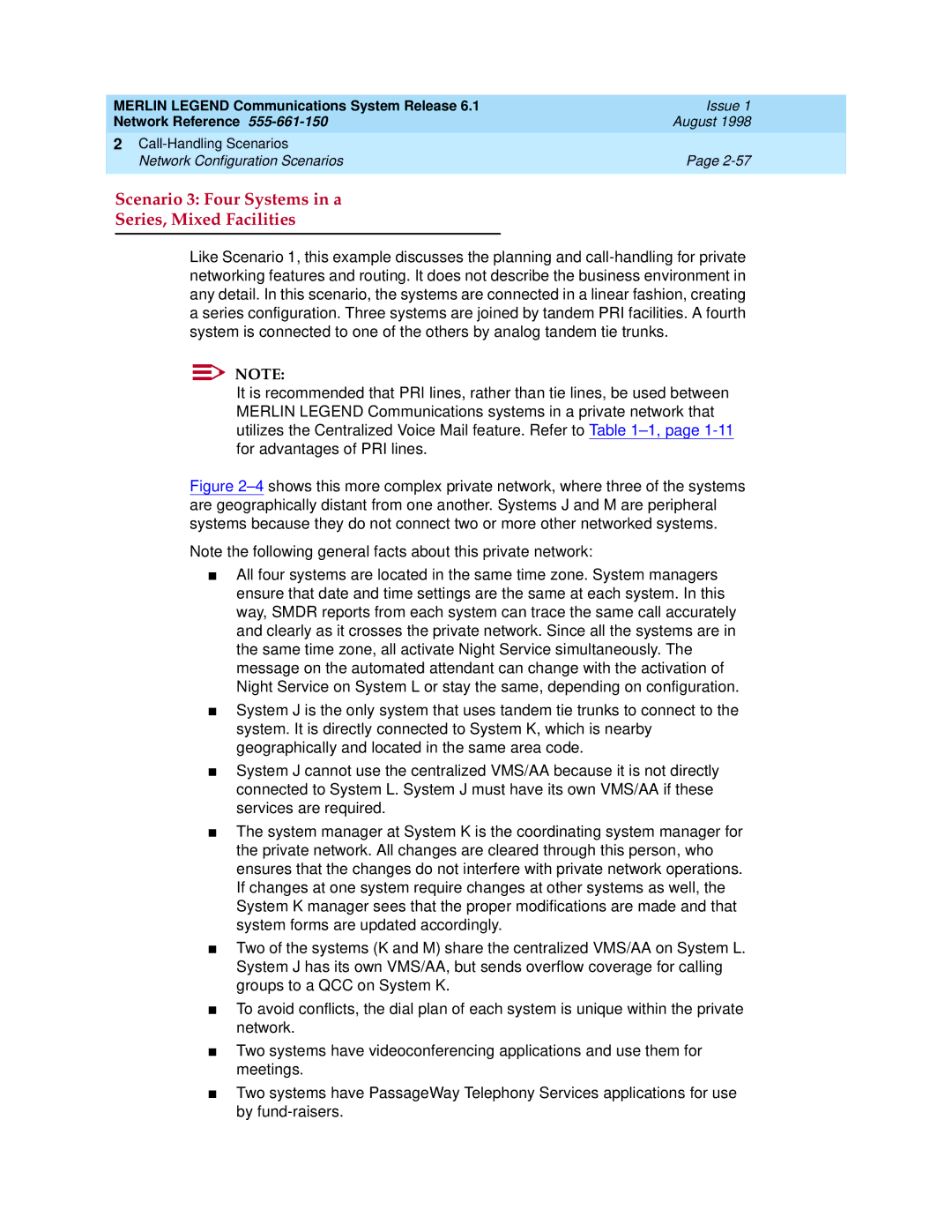MERLIN LEGEND Communications System Release 6.1 | Issue 1 |
Network Reference 555-661-150 | August 1998 |
2 Call-Handling Scenarios | |
| Network Configuration Scenarios | Page 2-57 |
| | |
| Scenario 3: Four Systems in a | |
| Series, Mixed Facilities | 2 |
| | |
Like Scenario 1, this example discusses the planning and call-handling for private networking features and routing. It does not describe the business environment in any detail. In this scenario, the systems are connected in a linear fashion, creating a series configuration. Three systems are joined by tandem PRI facilities. A fourth system is connected to one of the others by analog tandem tie trunks.
NOTE:
It is recommended that PRI lines, rather than tie lines, be used between MERLIN LEGEND Communications systems in a private network that utilizes the Centralized Voice Mail feature. Refer to Table 1–1, page 1-11 for advantages of PRI lines.
Figure 2–4 shows this more complex private network, where three of the systems are geographically distant from one another. Systems J and M are peripheral systems because they do not connect two or more other networked systems.
Note the following general facts about this private network:
■All four systems are located in the same time zone. System managers ensure that date and time settings are the same at each system. In this way, SMDR reports from each system can trace the same call accurately and clearly as it crosses the private network. Since all the systems are in the same time zone, all activate Night Service simultaneously. The message on the automated attendant can change with the activation of Night Service on System L or stay the same, depending on configuration.
■System J is the only system that uses tandem tie trunks to connect to the system. It is directly connected to System K, which is nearby geographically and located in the same area code.
■System J cannot use the centralized VMS/AA because it is not directly connected to System L. System J must have its own VMS/AA if these services are required.
■The system manager at System K is the coordinating system manager for the private network. All changes are cleared through this person, who ensures that the changes do not interfere with private network operations. If changes at one system require changes at other systems as well, the System K manager sees that the proper modifications are made and that system forms are updated accordingly.
■Two of the systems (K and M) share the centralized VMS/AA on System L. System J has its own VMS/AA, but sends overflow coverage for calling groups to a QCC on System K.
■To avoid conflicts, the dial plan of each system is unique within the private network.
■Two systems have videoconferencing applications and use them for meetings.
■Two systems have PassageWay Telephony Services applications for use by fund-raisers.
